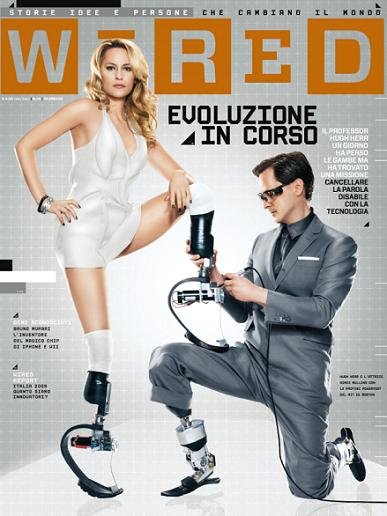Science fiction has failed in many ways, but I was reminded of one of its more egregious lapses, bionics, just the other day. I was talking to a coworker who turned out to be an Extropian. We don’t get many creationists in Massachusetts, but we do get their opposites like this guy.
We were talking about medical wearables, as one does these days. The electronics for body sensors have gotten so cheap and low-power that they can be scattered about to track all kinds of health measures. They’re pretty bad today, as witness the problems with smart watch heart rate monitors. These attempt to measure your pulse by shining an LED through the skin to see blood flow. Everything disrupts the signal: movements of muscles, perspiration, saturation of the sensor. Plus the light won’t shine through dark skin, so it’s not just inaccurate – it can be racistly inaccurate. Great.
Anyway, we were discussing all this when he said “You know, the real answer is to get rid of this meat altogether.” He plucked at his forearm. “We’ve got to get out of this weak stuff.” Oh? “Machines are obviously what we’ll be in the long run. Maybe it won’t be in my lifetime, but it’s got to happen eventually.”
He’s thinking of pictures like this:
Superhumanly attractive people with superhuman physical abilities. Mullins lost her legs due to a birth defect, and Herr lost them to frostbite while trapped during a mountain storm. Both were competitive with able-bodied athletes, and Herr has been steadily improving prosthetics at the MIT Media Lab. They sure look like the next generation.
But perhaps the obvious bears repeating:
No artificial replacement of a body part is as good as the healthy original, including teeth and hair.
Dentures stop fitting and wear out. Toupees are causes of mockery. Artificial hearts need horrific operations and only help until a transplant can be found. Artificial limbs don’t join properly with the natural limb and are never as controllable. They’re just about at the point where they can make a decent ankle. They’re getting there with knees. Hands? Tongues? Eyes? Nowhere near.
Your existing organs are almost certainly older than any machine you own. They have a huge advantage over any artificial version – they can repair themselves. No machine can reproduce itself – it takes an entire industrial system to do that.
That’s not going to change. Forget about 3D printers that can reproduce themselves – they can’t even make their own motors, much less their chips. Machines use a far wider range of the periodic table than any organic system, because organics have to rely on what can be eaten in the local environment. Machines can use trade networks that span the planet. It’s always going to be easier to make something with central, specialized equipment than it is to put some kind of universal fabricator into every widget.
The ultimate answer to replacing failing body parts is going to be regrowing them. This is already getting huge attention. People have used stem cells to regrow tracheas and livers. The new parts will be bio-compatible with the old, and not instantly attacked by the immune system. They’ll adapt as the body changes and keep themselves in good repair.
What they won’t be is superhuman. They’ll be better than what you have, and maybe even as good as what you had at age 20. But becoming superhuman through mechanical parts? An illusion. Yet it’s one that even people in high-tech hold, thanks to the dreams of science fiction.


Yes, stem cells will be the future of body repairs and genetic engineering will increase our abilities to their biological limits and eliminate hereditary diseases (or make us extinct). We’ll still have to find a solution for non-hereditary cancers.
A powered exoskeleton will be the best option for occasional “hands-on” superhuman tasks, as in “Edge of Tomorrow”, “Elysium”, “Avatar” and “Aliens”.